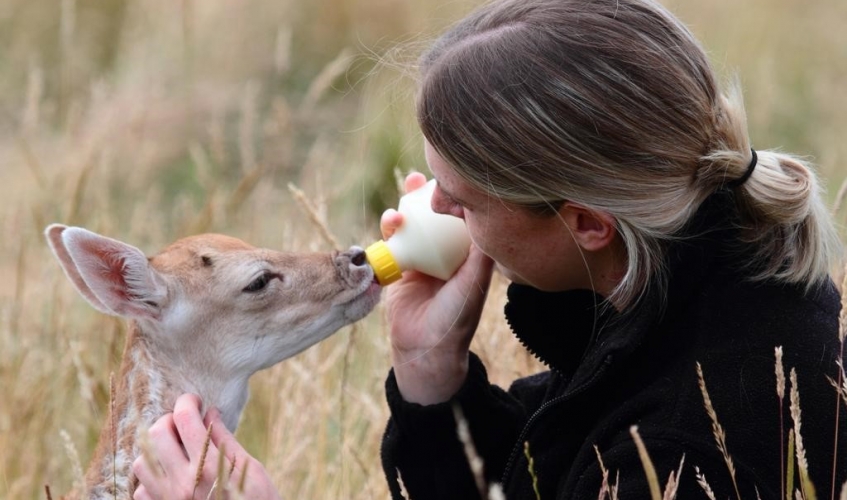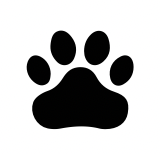National Wildlife Rescue Centre assistant manager, April Dodds, tells us what it takes to care for fawns that arrive at our wildlife hospital.
The majority of the time fawns come into our care when they don’t actually need our help.
Often we still need to admit these animals to our wildlife hospital because people have spent too much time interacting with them already – we had a case where someone had let a fawn into their house for five days before contacting us.
Close contact with people has an extremely negative impact on fawns. When well-meaning people feed fawns in the wild they are unknowingly causing harm to their welfare. Fawns are very timid and will die from shock. For our wildlife hospital it has meant that only three of those who came into our care were successfully rehabilitated. These were Honey who arrived on 18 May, Hobby who arrived on 18 June, and Perrie who arrived on 16 July.

Fawns are some of the most complex animals that arrive at our wildlife hospital, and our specialist team put a huge amount of time and effort into their care.
They usually need to be bottle-fed four times a day between 7.30am and 11.30pm, and sometimes up to five times if they are very small and willing to feed. Because fawns are generally terrified of humans, this can be very tricky. We have minimal staff interacting with them, which means working long and tiring hours. There are three people in our large mammals team and it's very difficult to get them to trust all of us.
It took us a few days to get Honey, Hobby and Perrie to come out of their hideout carriers for their bottles. They are a prey species who are born with their ears and eyes open. Everything in their body is telling them not to trust us, however, we are the only thing that stands between them and life.

Every fawn is vet checked to ensure they don’t have any issues prior to arrival, and any wounds can be treated.
Once we manage to get them feeding, our next challenge is to build their confidence. We need them to trust us enough to start spending time out of their stable in our paddock, without running away from us and not coming back.
Once fawns have been in our care for a few weeks and are feeding well, if any new fawns arrive and begin feeding, we would move them into a stable together to start forming a little herd.
This year’s fawns were difficult to care for. They would feed but became extremely scared when one staff member would take over from the other at feeding time. They were very wary of different people, including myself. One fawn would just refuse to feed from me and every time she saw me she would just bolt.

This could have been caused by anything, right down to my scent. Luckily, we were able to juggle the feeds between the three members of staff who rear the fawns to ensure she got her bottles.
Once weaned at around 12 weeks, all of the deer require fresh ‘browse’ in the form of sprigs of trees which they would naturally eat in the wild, such as hawthorn, wild rose, birch, rowan, bramble leaves etc. We also supplement these with solid food and salads. At this point in the rehabilitation we are as hands off as possible, and the deer will live between the stables and the paddocks as they please.
When they are around six months old, have grown their winter coat, and weigh over 20kg, they are ready to be released.

Because so much hard work goes into rearing the fawns, it’s always an emotional time watching them be released.
It’s a massive reward to see them leap back into the wild, I don’t think we’ll ever get tired of it.
Fawns are one of the most difficult animals to rear. The reality is we often aren’t successful due to their strong instincts, stress levels, and what they have endured prior to arriving with us. It is really important that members of the public do not attempt to help a fawn by picking it up or leading it away from where they have seen it. It is normal for a mother deer to hide her fawn in long grass while she goes off to feed. However, she is likely to still be nearby.
Thanks to a huge amount of patience and perseverance, in this case, Honey, Hobby and Perrie were all successfully rehabilitated and released back into the wild where they belong.


